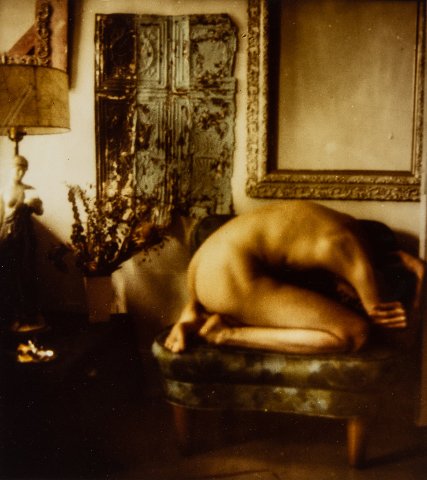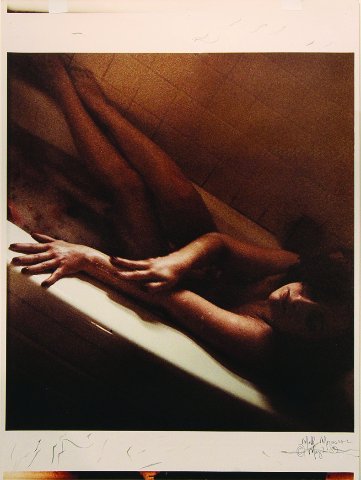Mark Morrisroe at Clamp
Leading Figure of the Boston School.
By: Clamp - May 29, 2024
Mark Morrisroe
Clamp Gallery
247 West 29th Street,
Ground Floor
New York, NY 10001
+1 646.230.0020
info@clampart.com
Gallery hours:
Tuesday – Saturday,
10 am – 6 pm
Opening reception:
Thursday, May 30, 2024
Through July 12
CLAMP is pleased to announce the gallery’s fifth solo exhibition of photographs by artist Mark Morrisroe (1959-1989).
Pre-Nympho Pia is the name of the lead character played by Pia Howard in the Super-8 film titled “Nymph-O-Maniac” (1984). Mark Morrisroe’s longest and most ambitious film, “Nymph-O-Maniac” typifies the artist’s trash aesthetic likely influenced by filmmakers such as Andy Warhol, Jack Smith, and John Waters. Stuart Comer, Chief Curator of Media and Performance at The Museum of Modern Art, New York, writes: “The script seems almost entirely comprised of phrases culled from phone sex lines and porn dialogue, but the gender tables are turned [from the artist’s previous films] and women play most of the roles. In rooms whose walls are covered in gay male porn magazine clippings and record covers, vamped up girls gossip, come on to each other, apply lipstick, steal drugs, burn popcorn, and discuss their boyfriends’ penis sizes.”
Mark Morrisroe cast his friends and lovers in all three of his Super 8 productions, and similarly used them as models for his highly experimental still photographs. The buxom Pia Howard is the subject of many of these images, including the print included in the exhibition shot on the set of the film. In “Nymph-O-Maniac,” there is a scene in which the camera focuses solely on Pia while she takes a bubble bath and sings about her sex life in a melodramatically breathy voice. Other recurring models in the artist’s photographs included in the exhibition include Jonathan “Jack” Pierson, Rafael Sánchez, Gail Thacker, Lynelle White, and Morrisroe himself.
While Morrisroe’s work is often discussed in terms of identity and performance, the formal aspects of his work are equally significant, as he extensively explored the possibilities of analog image manipulation. For example, writer Fiona Johnstone explains the artist’s celebrated ‘sandwich’ technique—“a complex process that involved copying the colour negative onto black and white film, recopying, and cutting out the black and white negative before layering over the original colour one. The double negative ‘sandwich’ was then exposed to photographic paper, producing a single image. The result is typically a luscious, velvety textured print with an aura of otherworldiness.” Morrisroe would then often retouch fingerprints, scratches, and dust found throughout the ‘sandwich’ prints with paints of contrasting tones, highlighting technical imperfections.
Born in Malden, Massachusetts, north of Boston, to a single mother, Morrisroe left home at an early age supporting himself as a hustler under the guise of Mark Dirt. He eventually enrolled in the School of the Museum of Fine Arts on scholarship, where he graduated in 1982. Morrisroe produced extraordinarily diverse work in Boston, moving to New York in the mid-1980s. He died of AIDS-related complications in 1989 at the age of 30. He is now remembered alongside a group of friends and subjects who attended the School of the Museum of Fine Arts or the Massachusetts College of Art, and are commonly known as the Boston School, including David Armstrong, Philip-Lorca diCorcia, Nan Goldin, Pat Hearn, Jack Pierson, and Gail Thacker.
"Mark was an outlaw on every front—sexually, socially, and artistically. He was marked by his dramatic and violent adolescence as a teenage prostitute with a deep distrust and a fierce sense of his uniqueness. I met him in Art School in 1977; he left shit in my mailbox as a gesture of friendship. Limping wildly down the halls in his torn t-shirts, calling himself Mark Dirt, he was Boston’s first punk. He developed into a photographer with a completely distinctive artistic vision and signature. Both his pictures of his lovers, close friends, and objects of desire, and his touching still-lifes of rooms, dead flowers, and dream images stand as timeless fragments of his life, resonating with sexual longing, loneliness, and loss.”
—Nan Goldin, 1993
Morrisroe’s photographs are now represented in the permanent collections of many institutions such as The Metropolitan Museum of Art, New York; Museum of Modern Art, New York; Whitney Museum of American Art, New York; Fotomuseum Winterthur, Switzerland; Art Institute of Chicago; Addison Gallery of American Art, Phillips Academy, Andover, Massachusetts; The Institute of Contemporary Art, Boston; Hammer Museum, Los Angeles; Wadsworth Atheneum Museum of Art, Hartford, Connecticut; WestLicht Museum, Vienna; and The Hague Museum of Photography, Netherlands.
Work copyright by Mark Morrisroe (1959-1989)



